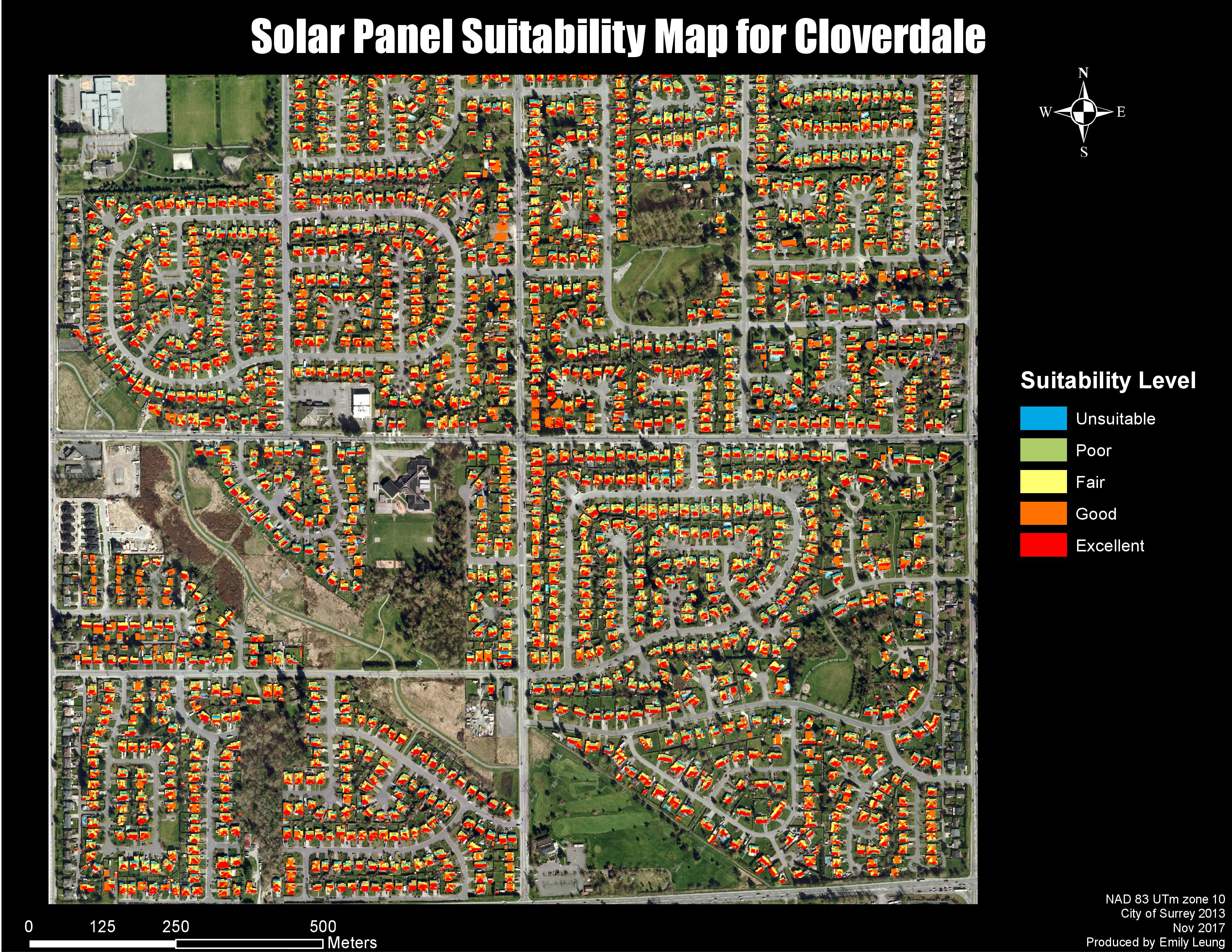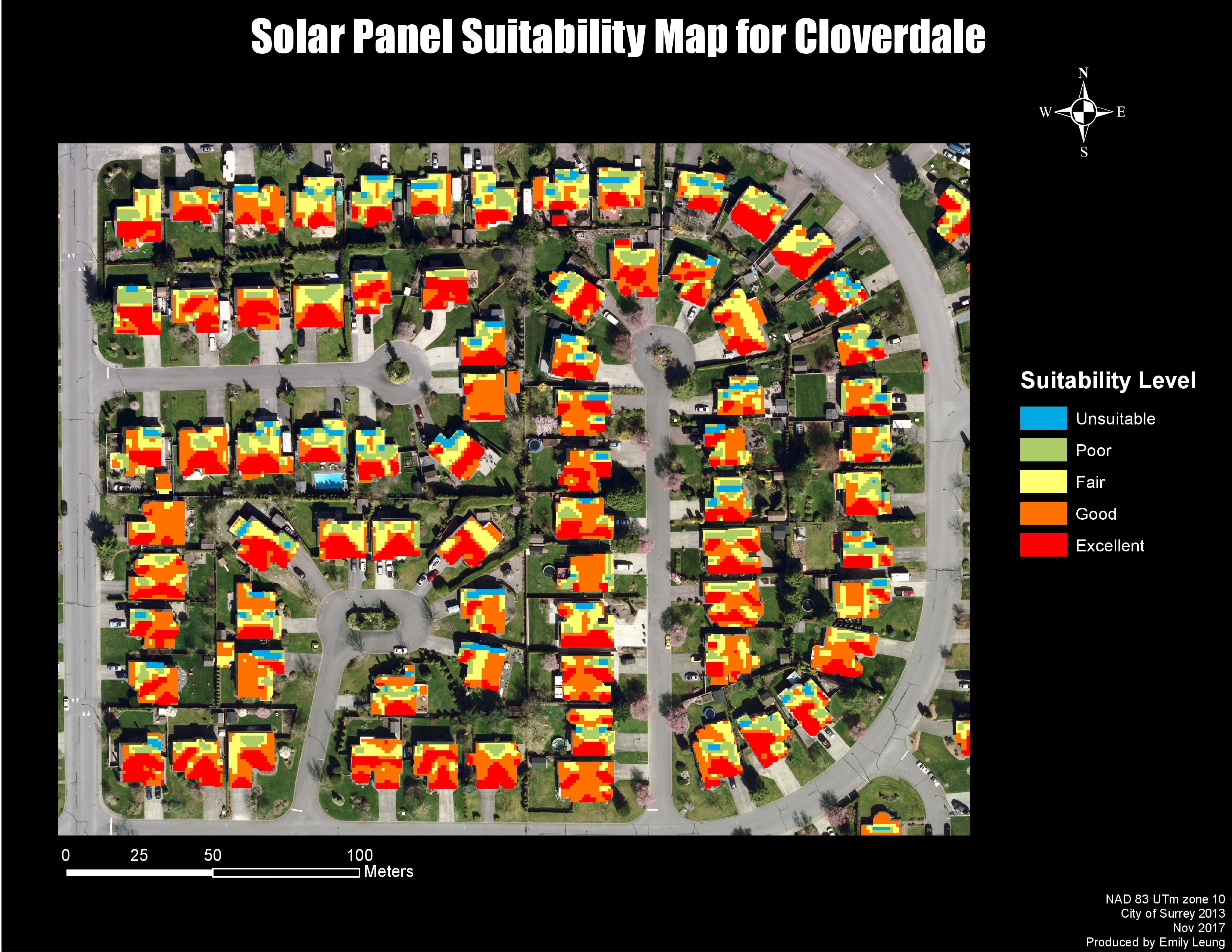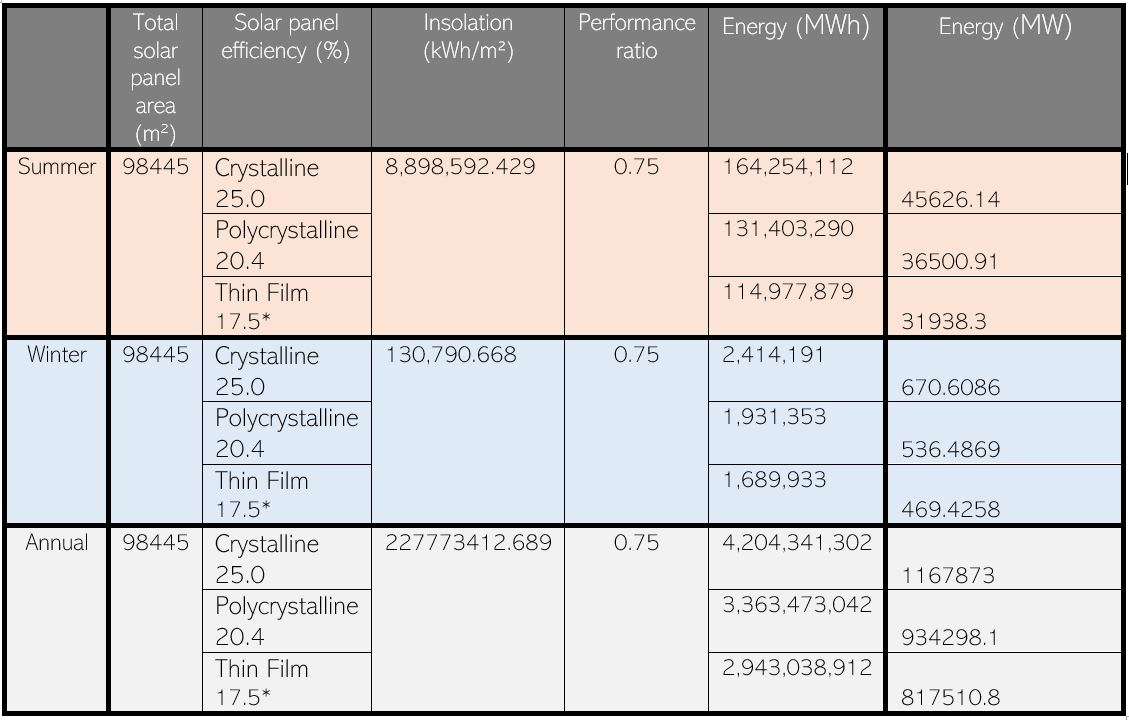Final Maps

Please refer to this Suiability map PDF file for a higher resolution map.

Please refer to this Suiability map_close up PDF file for a higher resolution map.
The above GIS analysis was conducted under an idealized situation. In reality, the actual operation condition of solar panels is subject to the state of sun rays, weather and the performances of different type of PVs (Pelland et al., 2006). Solar radiation intensity, angle of incidence, temperature, spectral distribution, snow cover, electric cable deficiency may lead to loss of electricity in power generation.
Three solar cells are typically used for residential PV electricity system. They are crystalline, polycrystalline and thin film (which is further divided into cadmium telluride (CdTe), copper indium gallium selenide (CIS/CIGS) and amorphous silicon). The 2013 Solar Cell Comparison Chart below is obtained from Energy Informative, a guide to solar panels for homeowners. It lists out the performance of different types of solar cell modules:
| Crystalline | Polycrystalline | Thin Film | |||
| CdTe | CIS/CIGS | Amorphous | |||
| Typical module efficiency | 15-20% | 13-16% | 6-8% | 9-11% | 10-12% |
| Best research cell efficiency | 25.0% | 20.4% | 13.4% | 18.7% | 20.4% |
| Area required for 1 kWp | 6-9 m2 | 8-9 m2 | 13-20 m2 | 11-13 m2 | 9-11 m2 |
The potential electricity production can be calculated using the following formula provided by the Photovoltaic software:
E = A * r * H * PR
E = Energy in kWh
A = Total solar panel Area in m2
r = Solar panel efficiency(%)
H = Annual average solar radiation on tilted panels regardless of shadings in kWh/m²
PR = Performance ratio
According to a report generated by Natural Resources Canada, the yearly average performance ratios for photovoltaic systems built between 1996 and 2002 range from 0.4 to 0.85, and 0.75 is the most common value (Pelland et al., 2006). Hence, 0.75 is used as the default performance ratio in this analysis. There are a total of 2028 roofs in the study area, including house and garage roofs. The total area of the roofs is 98445m2.
The table below shows the energy that can be generated under different time periods.

*the Solar panel efficiency for thin film is the average of the three subdivisions.
